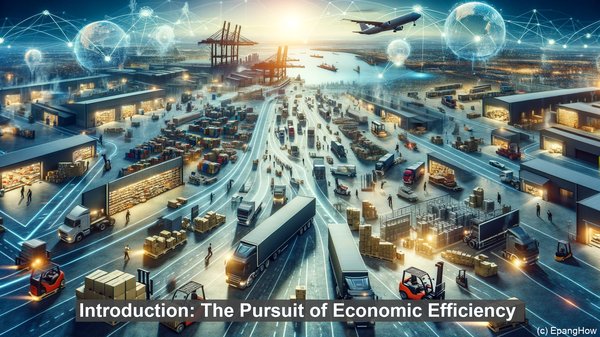Introduction: The Pursuit of Economic Efficiency
Hello everyone! Welcome to our article on allocative efficiency and productive efficiency. As we explore these concepts, we’ll unravel the intricacies of economic efficiency, a key objective in any economic system.
Defining Allocative Efficiency
Allocative efficiency refers to the optimal allocation of resources in an economy, where resources are allocated in a manner that maximizes societal welfare. In simpler terms, it’s about ensuring that resources are used in the best possible way to meet the needs and wants of society.
Understanding Productive Efficiency
On the other hand, productive efficiency focuses on the production process itself. It is achieved when goods or services are produced at the lowest possible cost, using the available resources in the most efficient manner. In other words, it’s about minimizing waste and maximizing output.

The Relationship: Complementary Yet Distinct
While allocative efficiency and productive efficiency are related, they are not the same. Allocative efficiency primarily deals with resource allocation, ensuring that the right goods and services are produced in the right quantities. Productive efficiency, on the other hand, is concerned with the production process, aiming to produce goods and services in the most efficient manner.
Implications of Allocative Efficiency
When an economy achieves allocative efficiency, it means that resources are allocated in a way that maximizes societal welfare. This leads to an optimal distribution of goods and services, ensuring that they reach those who value them the most. Allocative efficiency is crucial for a fair and equitable society.

Implications of Productive Efficiency
Productive efficiency has its own set of implications. When an economy is productively efficient, it can produce more goods and services with the same amount of resources. This leads to increased output, which can result in economic growth and improved living standards.
Trade-Offs: The Challenge of Balancing Both
In reality, achieving both allocative efficiency and productive efficiency simultaneously can be challenging. There are often trade-offs involved. For example, producing more of one good may mean producing less of another. Striking the right balance is a constant challenge for policymakers and businesses.
